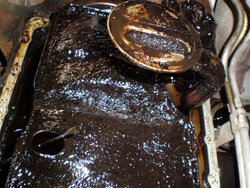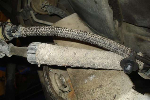SoNic67
Explorer Addict
- Joined
- January 24, 2010
- Messages
- 3,050
- Reaction score
- 23
- City, State
- Newport News, VA
- Year, Model & Trim Level
- 2001 V8 (Eddie Bauer) AWD
I have removed (at a shop) the right side cylinder head, install spark plug inserts and put it back. New gaskets, filled with coolant and oil - Castrol 5W20 High Milage (that's the range recomended in the book for a 5.0L engine).
Now, after I drive some 20-30 minutes, at the stoplight, the needle for oil pressure starts to oscillate and hits the stopper. First it is just light bumps, but it gets worse, violently even with time (heat?). And that is fast, like 2-4 times per second. If I put the transmission in N it stopes (the RPM's are incresing slightly). If I keep driving, even that won't help - it will oscillate even on N and when I put it on drive, neddle will stay 0.5 sec stuck to the lower side, then when RPM's are over 800, will go smack in the middle. The "Oil" light will start to come on really dim at stoplight.
Water temperature is normal all the time - in the middle.
I did drain a quart of oil and added one quart of Castrol 10W40 High Milage. Feels like it did improve some but after a while it still does oscillate - maybe less violent...
Any ideas what can be wrong?
Now, after I drive some 20-30 minutes, at the stoplight, the needle for oil pressure starts to oscillate and hits the stopper. First it is just light bumps, but it gets worse, violently even with time (heat?). And that is fast, like 2-4 times per second. If I put the transmission in N it stopes (the RPM's are incresing slightly). If I keep driving, even that won't help - it will oscillate even on N and when I put it on drive, neddle will stay 0.5 sec stuck to the lower side, then when RPM's are over 800, will go smack in the middle. The "Oil" light will start to come on really dim at stoplight.
Water temperature is normal all the time - in the middle.
I did drain a quart of oil and added one quart of Castrol 10W40 High Milage. Feels like it did improve some but after a while it still does oscillate - maybe less violent...
Any ideas what can be wrong?












